- Home
- [Beginning of Sake] - Let's learn more about Sake!
- 10. Seasonal Ingredients & Sake! Let’s Enjoy a higher-grade taste!
10. Seasonal Ingredients & Sake! Let’s Enjoy a higher-grade taste!
- 2021/11/24
- 5 comments
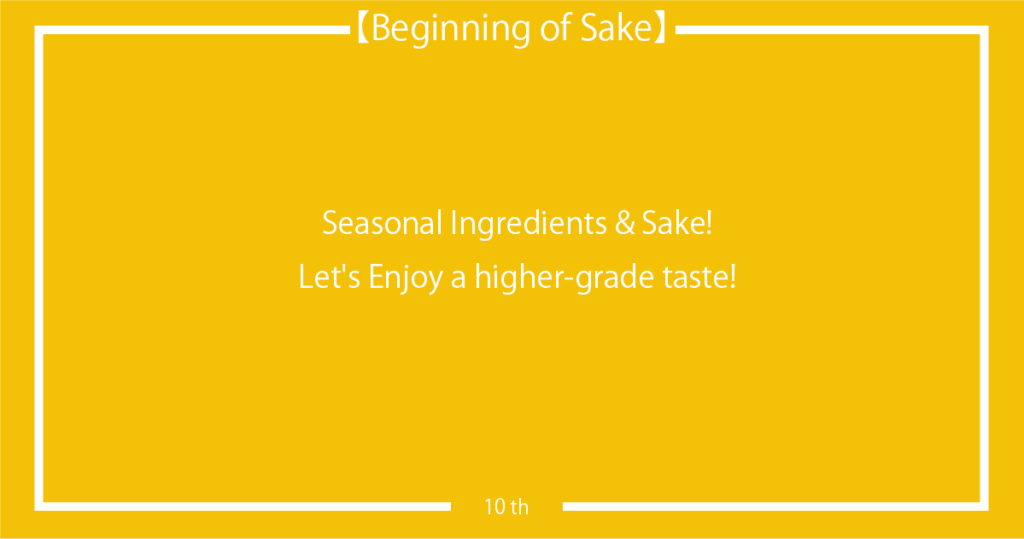
In the previous article, “Seasonal Event! Explaining how to choose and recommend sake that is suitable for the occasion!” , we introduced what kind of sake should be selected for each seasonal event.
In this article, I will introduce what kind of sake is recommended for “seasonal ingredients”.
In Japanese food culture, “seasonal ingredients” are emphasized.
Nowadays, thanks to the development of various technologies, there are many ingredients available all year round.
Therefore, it is difficult to be aware of the “season”.
However, in Japan, where the differences between the four seasons are clear, we have long used ingredients that are only available in that season and ingredients that are the most delicious in that season.
And it has been conscious of providing dishes that maximize the goodness of the ingredients and enjoy the seasonal feeling.
Seasonal ingredients are said to be nutritious and good for your health.
As the season approaches, there are many ingredients that you will want to eat.
In the previous article, we introduced what type of sake suits for each season.
Based on that, we will introduce sake suitable for seasonal ingredients under the title of “Seasonal Ingredients & Sake”.
If you combine seasonal ingredients with appropriate sake, you can enjoy a higher-grade taste.
Contents
Seasonal ingredients & sake – in Spring

I tried to summarize the ingredients that will be in season in spring.
[Vegetables, fruits, fish and shellfish that are in season in spring]
| Vegetables | Fruits | Seafood |
| Various wild plantsRape blossoms
Broad beans Asparagus Bamboo shoots, etc. |
Strawberry Kiyomi Orange Hassaku Decopon Amanatsu etc. |
Sea bream Clams Turban shell Firefly squid Clams, etc. |
Various wild plants
Wild plants used in Japanese cuisine include tara sprouts, Fukinotou(Butterbur scape), and kogomi(ostrich fern).
As a dish,
- Tara sprouts: Tempura, white and sesame sauce
- Fukinotou: Tempura, Ohitashi, Aemono, Fukinotou Miso
- Kogomi: Tempura and sesame sauce
And so on.
Wild plants have a unique refreshing aroma and a refreshing bitterness.
Therefore, when paring sake, it is recommended to pare it with “Kunshu“, which has the same fragrant and simple taste among the types of taste.
Wild plants will be on the market in February-April.
During this period, Daiginjo Sake and new Ginjo Sake are on sale.
Many of these liquors correspond to “Kunshu “.
Both are combinations that can only be enjoyed in spring, so please try them.
Tai(Sea bream)
Sea bream is a fish that can be seen all year round, but Sea bream, which is harvested during the cherry blossom season, is called “Sakura(Cherry blossoms) bream” and is useful.
Sea bream reaches the spawning season when the cherry blossoms bloom.
Males have a beautiful appearance with white spots like cherry blossoms scattered on their bright crimson body to attract females.
It is said to be tastier than at other times because it is oily in preparation for spawning.
Examples of dishes using sea bream include “sashimi,” ” salt-grilled,” ” Sea bream rice,” “simmered,” and “shabu-shabu”.
In general, many Sea bream dishes make use of the delicate taste of it.
When paring sake, choose a sake that does not impair such a delicate taste.
When it comes to the type of taste of sake, the one with a simple taste is good.
This applies to “Kunshu” and “Soshu“.
Specifically, this type is relatively common in sake with names such as “Ginjo,” “Daiginjo,” “Junmai Ginjo,” “Junmai Daiginjo,” and “Honjozo.”
Seasonal ingredients & sake – in Summer
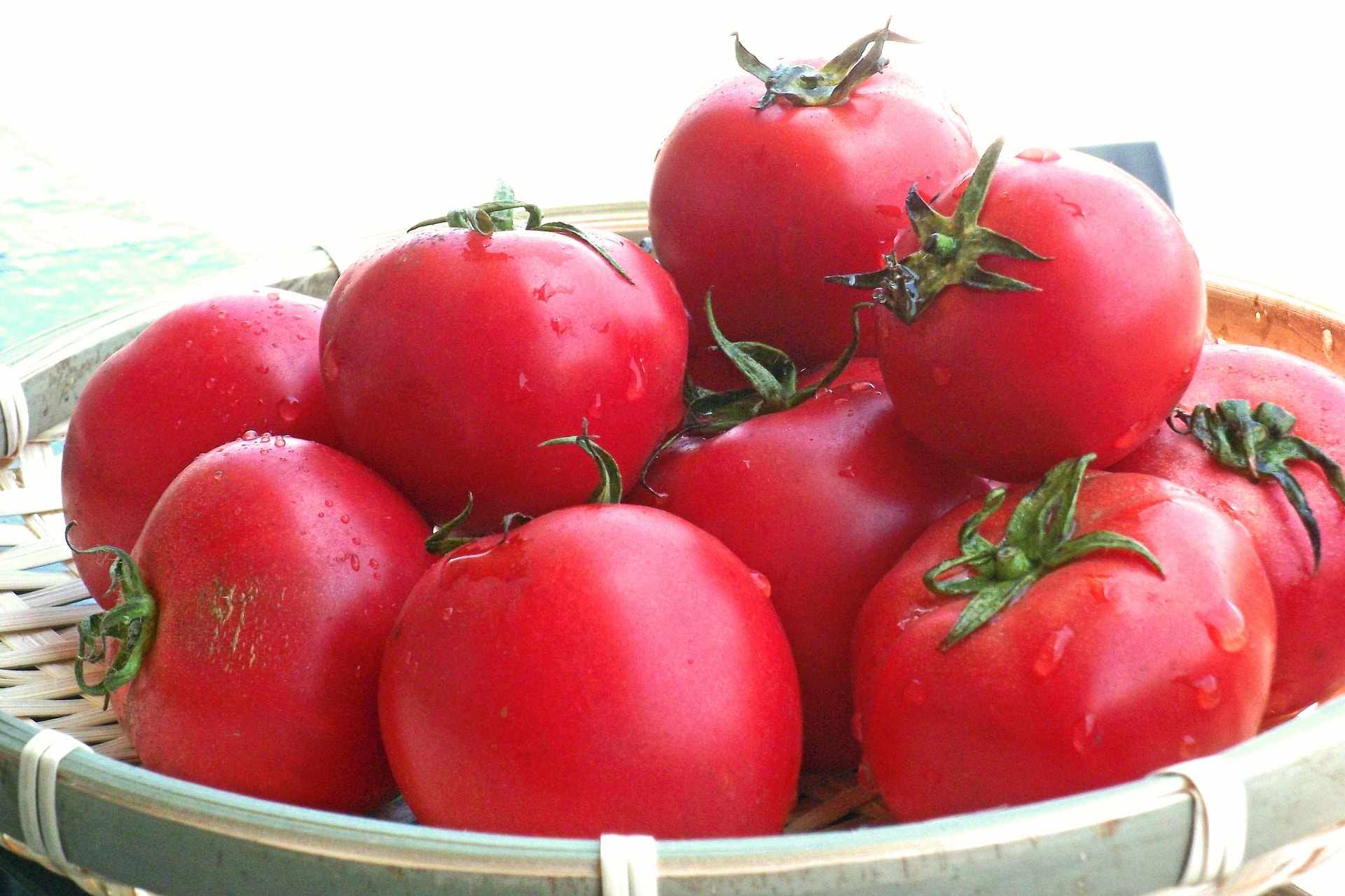
We have summarized the ingredients that will be in season in summer.
[Vegetables, fruits, fish and shellfish that are in season in summer]
| Vegetables | Fruits | seafood |
| Edamame Tomato Cucumber Okra Japanese ginger etc. |
Watermelon Cherry Melon Peach Raspberries etc. |
Ayu Skipjack Sardine Kohada Conger eel etc. |
Ayu (Sweetfish)
Natural sweetfish will be lifted in June.
The dishes made with sweetfish, “Ikezukuri” and “Ayu rice” , and further “Ayu Ramen“, there is also such.
However, ” salt-grilled” is probably the best.
Sweetfish is also known as ” scented fish”, and its body has a fruity scent.
In a certain gourmet manga (“Oishinbo”), there is an episode in which sweetfish has a different taste depending on the river it is caught, and a rich man is impressed by eating the natural sweetfish caught in the Shimanto River that flows through his hometown.
As I wrote in a previous article, aroma is an important element of taste.
The fact that the taste is different depending on the river that is taken means that the scent is also different, so it is understandable that it is called “sweetfish”.
For sweetfish that have a fruity scent, we recommend “Kunshu”, which also often has a fruity scent .
Specifically, this type is often found in sake with names such as “Ginjo,” “Daiginjo,” “Junmai Ginjo,” and “Junmai Daiginjo.”
Ayu from Shimanto River appeared in the episode of the previous manga.
There is a sake called ” Shimantogawa Junmai Ginjo “ which bears the name of this river and is a scented sake type.
Sake made in the hometown of sweetfish caught in the river of the hometown.
If he had served this sake to the rich person, he might have been impressed in squared rather than doubled.
Katsuo(bonito)
The first bonito that is sold from spring to early summer.
At this time of year, it is often found in restaurants and supermarkets such as fresh food departments.
Bonito is a fish that moves north and south around Japan every year.
It has a habit of starting northward from around March, moving to Honshu from May to June, moving from Tohoku to Hokkaido around the beginning of August to September, and going south again from September.
The bonito caught in June “Hatsugatsuo (first bonito)” , the bonito caught in September around “Modorigatsuo (return bonito)” is called.
It is also said that “return bonito” is more delicious and autumn is in season.
However, in general, it seems that summer is the best season for bonito.
Speaking of bonito dishes, there are various dishes such as “sashimi”, “nokkemori” and “tatsutaage”.
However, after all, it will be exhausted to “Katsuo no tataki”, Seared bonito.
Basically, bonito dishes are said to go well with any type of sake, but if you want to match it with the early summer bonito, it’s best to pare it with “Soshu”.
“Soshu” is characterized by its simple taste and mild aroma.
The Sake tends to be refreshing and refresh the mouth, so it will wash away the slightly bloody taste of bonito and make it eat cleanly.
Speaking of bonito, it is Katsuo no tataki, and Katsuo no tataki is Tosa / Kochi prefecture.
Kochi prefecture is a prefecture with many sake breweries, and there are various famous sakes.
When you eat Katsuo no tataki, if you pair it with sake from Kochi prefecture, you may feel that the local cuisine is even more delicious.
For your reference, the following is Kochi sake.
・Junmai Ginjo Shimantogawa
・Tosatsuru Honjozo Dry
・Suigei Junmaishu Scented fish
Hikarimono (horse mackerel, sardines, gizzards, etc.)
Hikrimono (Literally translating, “Shining objects”) is a fish whose skin is pale and shining, and horse mackerel, sardines, and gizzards are typical.
Summer is the season for these fish.
Speaking of Hikarimono dishes, there are “sashimi”, “(Ajino) tataki”, “namero”, “fried” and so on.
When you go to a sushi restaurant, hikarimono are offered often vinegar-tightened.
This is because most of the shiny fish are relatively small and their freshness deteriorates quickly, so from ancient times, salt was sprinkled on the fish’s body, washed with water, and then soaked in vinegar for storage.
For sashimi, it is greasy, and if it is soaked in vinegar, the refreshing acidity of the vinegar is characteristic.
To pair sake, it is recommended that “Soshu” which drains the oil and refreshes the mouth and has a refreshing flavor .
Hamo (Pike Conger)
The food that is indispensable as a summer tradition mainly in Kansai district is the Pike Conger dish.
Pike Conger is low in fat and has a delicate and elegant taste, so it has been especially useful in Kyoto cuisine.
Although Pike Conger are harvested in various parts of western Japan, they are generally not consumed so much because they have many small bones and are difficult to eat.
The Kyoto cuisine, “bone cutting”, put the finely kitchen knife to the body of the Pike Conger to solve such problems in the short cut technology of the ossicles.
Pike Conger is provided as “Yubiki” or “tempura”.
For the delicate and elegant taste of the Pike Conger, it is recommended to pare “Kunshu” and “Soshu”, which are characterized by their simple taste.
Summer cool dishes
Summer cool dishes, where you can enjoy the original taste of the ingredients.
It’s a good idea to pair “Soshu” with cold tomatoes, edamame, tataki cucumber, and chilled tomatoes .
When “Soshu” cooled, the refreshing taste increases, and the simple taste does not interfere with the taste of the ingredients.
Also, the aroma is modest, so it is easy to harmonize with the above dishes that are cold and do not have much aroma.
In hot weather, enjoy cool sake and cool dishes.
Anago (Conger eel)
Conger eel is a representative ingredient of summer.
The rich and rich taste of fat is popular.
Most of the dishes are seasoned with rich and sweet sauce, such as “Kabayaki” and “Boiled”.
You can also eat it at “Tempura” or “Yubiki”.
For conger eels that have a characteristic umami of fat, “Soshu” that neutralizes the fat is suitable, but there is also a way to enjoy it by paring it with the rich taste.
If the taste rich “Junshu” and “Jukushu” is also recommended to try together with.
Unagi (Eel)
Eel is an indispensable source of summer stamina, including “Ushinohi (Literally translating, “Day of the Ox”)”.
It is often eaten as Unaju (Eel bowl), so you may not have many chances to taste it with sake.
If you want to taste it with sake, “Unagi kabayaki” is a good dish.
For the rich taste of Kabayaki, we recommend “Jukushu”, which is also characterized by its rich taste.
You can enjoy a more harmonious taste by sprinkling with Japanese pepper.
Seasonal ingredients & sake – in Autumn
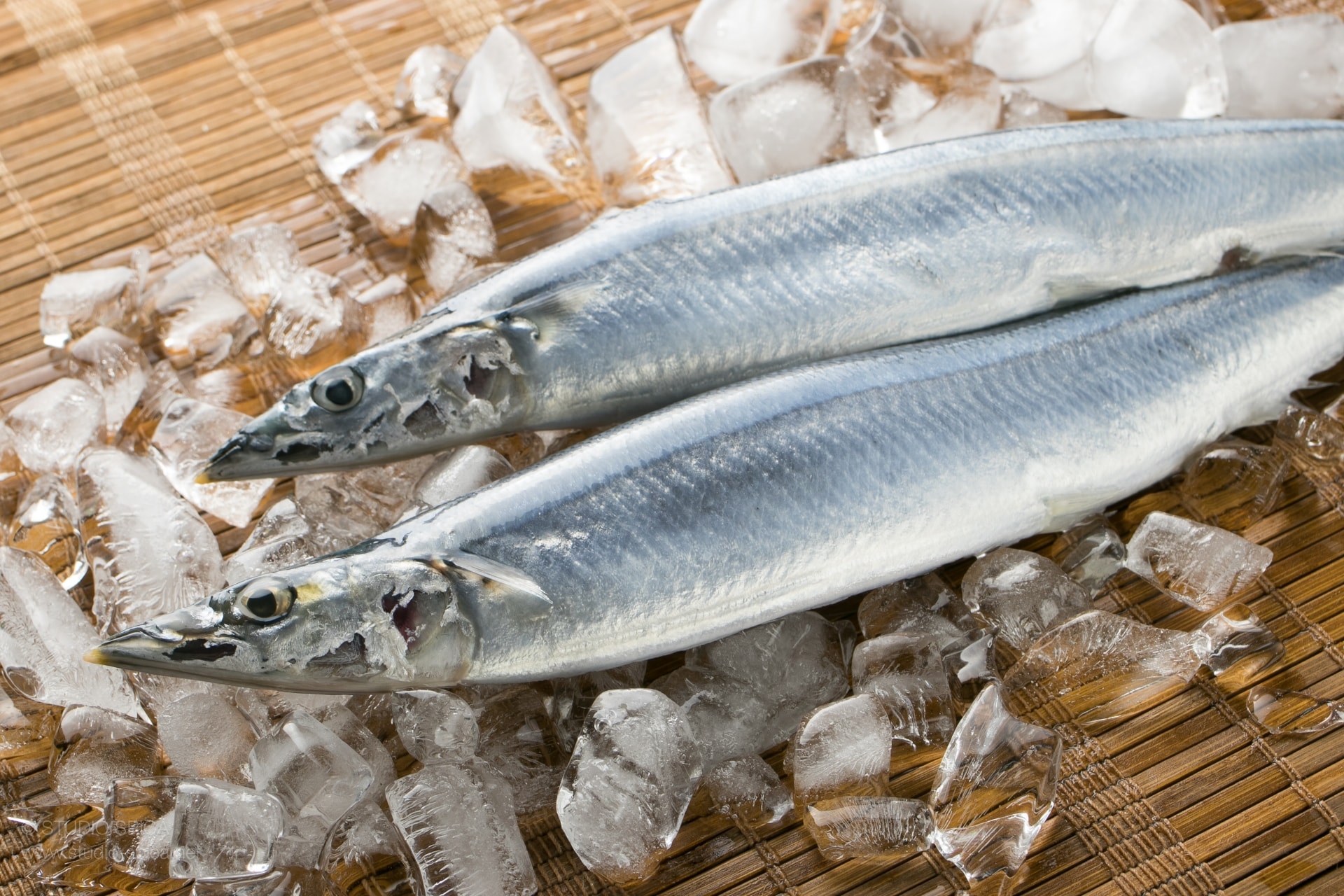
I tried to summarize the ingredients that will be in season in autumn.
[Vegetables, fruits, fish and shellfish that are in season in autumn]
| Vegetables | Fruits | Seafood |
| Pumpkin Mushrooms Ginkgo nuts Sweet potato Potatoes etc. |
Persimmon Chestnut Sudachi Grape Pear etc. |
Pacific saury Salmon Mackerel Shishamo Japanese flying Squid etc. |
Mushroom
Mushrooms, which are the representative food of autumn, also go well with sake.
For the rich taste of mushrooms, we recommend “Junshu”, which is also rich in taste.
In autumn, “Hiyaoroshi” is shipped as a seasonal product , and its mellow taste matches more with mushrooms.
Mushrooms are not only rich in taste, but also their aroma.
Therefore, “Jukushu”, which is characterized by having not only a rich taste but also a rich aroma, is also suitable.
In particular, “Jukushu” seems to match French and Italian dishes with mushrooms.
Sanma (Pacific saury)
Pacific Saury is the food that is in season in autumn.
Saury, which is mainly eaten by grilling with salt, is characterized by its rich fat taste, as in the rakugo story “Meguro no sanma.”
Also, not only the body but also the bitterness and umami of the gut part cannot be overlooked.
In particular, the gut part is suitable for combination with “Junshu”, and you will be able to enjoy the wonderfulness of sake.
On a slightly cold day, it is recommended to enjoy it with “Kanzake”, warmed sake, because it makes you feel more like autumn.
Gibier
Gibier is a French word meaning “wild animals” such as ducks, wild boars and deer.
The season is said to be autumn, when it stores nutrients and fat in preparation for hibernation and the cold of winter.
Examples of sake that goes well with Gibier include “Junshu” and ” Jukushu”.
Like Gibier, both are liquors with a rich taste, so I think they go well with the taste of Gibier, which has a similar tendency.
For Gibier dishes using butter and cheese, we recommend the sake made with “Kimotozukuri” sake , which also has a flavor derived from lactic acid bacteria.
Seasonal ingredients & sake – in Winter
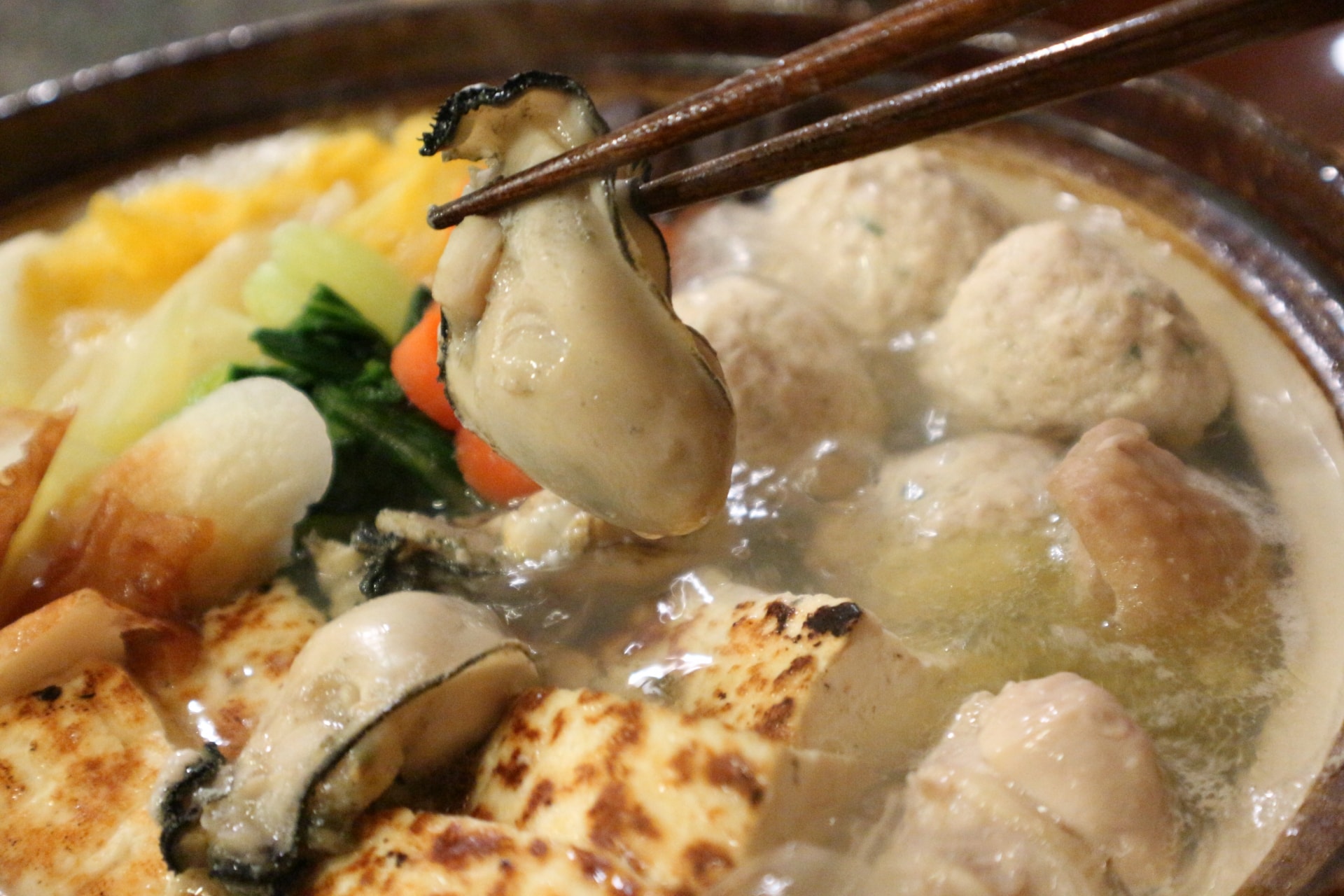
I tried to summarize the ingredients that will be in season in winter.
[Vegetables, fruits, fish and shellfish that are in season in winter]
| Vegetables | Fruits | Seafood |
| Cauliflower Komatsuna Shiitake Broccoli Lotus root etc. |
Sudachi Mandarin orange Yuzu Apples etc. |
Oyster Crab Abalone Kinmedai King crab, etc. |
Hot Pot
The most representative dish of winter is the hot pot.
There are various types of hot pot, from simple ones such as yosenabe, which served only with seasonings such as ponzu and condiments, using meat, fish, and vegetables in the refrigerator, to those using high-quality ingredients such as blowfish, suppon (soft-shelled turtle), and crab.
Basically, hot pot dishes and sake go well together.
You can enjoy it even more delicious by changing the combination depending on the type.
Below is a summary of sake that is suitable for each type of taste.
[Combination of hot pot that goes well with the taste type of sake]
- Soshu: Shabu-shabu of seafood, Mizutaki
- Kunshu: Fuguchiri, Crab pot
- Junshu: Oden, Yosenabe
- Jukushu: Kaki no dotenabe, Sukiyaki
Even if you use the same ingredients, the compatibility with sake will differ depending on the taste of the soup that is the base of the pot.
What combination of hot pot and sake change the compatibility?
It would be fun to pair it with various types of sake.
Oyster
A delicious oyster with a rich taste, as if the blessings of the sea were condensed into a shape.
There are various dishes such as “raw oysters”, “steamed oysters”, “baked oysters”, and “fried oysters”.
Although oysters have such a rich flavor, some people may be concerned about the fishy odor because of the abundance of the blessings of the sea.
As is often said in Japan, the combination of oysters and white wine is the best in French cuisine.
However, with white wine, you may feel the fishy smell of oysters.
Sake does not bring out the fishy smell of oysters, it only brings out the umami.
Oysters are ingredients that can be enjoyed in various ways depending on the cooking method.
You can also change the Sake to pair depending on the dishes.
Below is a summary of oyster dishes that go well with each taste type.
[Combination of oyster dishes that go well with the taste type of sake]
- Soshu: Raw oysters
- Kunshu: Oyster appetizer using herbs
- Junshu: Grilled oysters
- Jukushu: Oyster bank pot
There are many other dishes that use oysters.
It would be fun to find out what kind of dish and what kind of sake go well with each other.
Conclusion
In this article, I have introduced the paring of seasonal ingredients and sake.
As the seasons change, so do the seasonal ingredients.
Depending on that, the type of taste of Sake that goes well with it will also differ.
If you taste a paring of Sake and seasonal ingredients that go well with each other, you will feel more delicious due to the synergistic effect.
Japan has a climate where the changes of the four seasons are clear.
Therefore, in Japanese culture, seasonal events and dishes have developed.
In today’s busy world of various things, it seems that efficiency tends to be emphasized and various things tend to be homogenized.
However, there are seasonal dishes and sake that goes well with them.
When you take a break, such as on a holiday, I think it’s a good idea to heal your daily fatigue and save tomorrow’s energy by tasting food and sake that can only be enjoyed at that time.
Everyone, please try to enjoy the season with seasonal food and sake.
Next time is the 11th “What does alcohol and food “match / do not match”? Basic knowledge of the compatibility of alcohol and food that you should know”
[References] SAKE SERVICE INSTITUTE(SSI), “MOTOI of NIHONSHU”, NPO FBO 2018
It's our great pleasure if this article is helpful for you.
Comment (0)
No trackbacks yet.









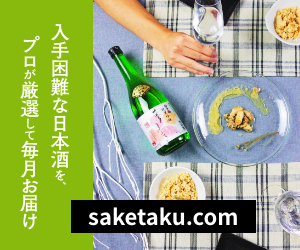
No comments yet.